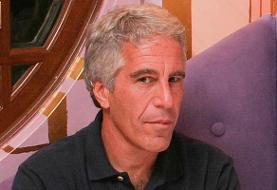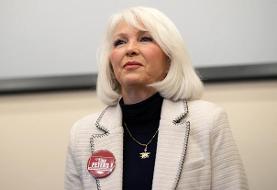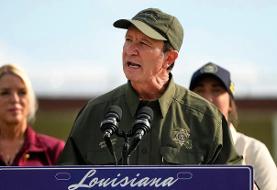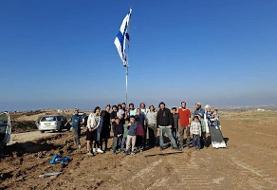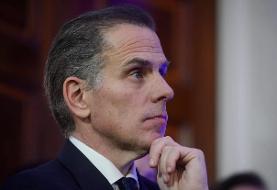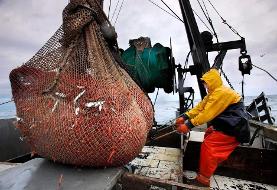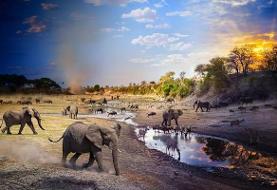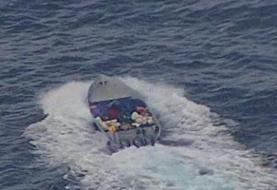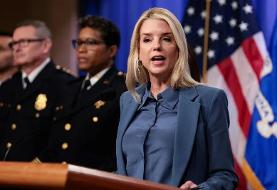Videos: These Scientists Had Predicted Coronavirus Pandemic As Humans Damage Ecosystems
Health and Science Blog, Kodoom.com Editorial:
In this rarely seen 2010 video, Dr. Peter Daszak, the president of Ecohealth Alliance, discusses how pathogens from animals around the world create deadly disease epidemics, and how we should stop them before they affect the human population. He had predicted coronavirus-like epidemics:
In 2013, Dr. Daszak predicted that Chinese Bats may be carrying the next coronavirus like pandemic. Dr. Peter Daszak has researched for 30 years how deforestation and wildlife trade (an industry worth $76 billion and employing 14 million people in China) could lead to pandemics that could be even worse than coronavirus and could ultimately lead to human extinction. He believes plagues are not only part of our culture; they are caused by it! A comprehensive database reveals more than 3.2 billion live animals imported to United States over 15 years. Daszak’s team has estimated that there are as many as 5,000 coronavirus strains waiting to be discovered in bats globally. In many bat dwellings including mines or caves like the Shitou Cave in China constant mixing of different viruses creates a great opportunity for dangerous new pathogens to emerge.
Bats make up one-fifth of Earth's total mammalian population, the second largest order after rodents play a significant role in health of the ecosystem through pollination, fruit dispersion, and seed dispersion, as well as in the destruction of crop-destroying insects. The bat conservation group estimates their value to agriculture may be as high as $53 billion a year. Countless bats are being driven out of roosts in caves and abandoned mines by human activities because of inappropriate guano mining (bat droppings, or guano, are a valuable fertilizer) or thoughtless tourism. During the winter months, large numbers of bats hibernate in caves and mines. If roused from hibernation, often by human disturbance, bats can burn through the stores of fat they need to survive the winter. Loss of habitat remains the most widespread peril worldwide. The forests many bats use for roosting and/or foraging for food are disappearing at a frightful rate – shrunken by timber harvests or cleared to make room for farm crops, mining operations, cattle pastures or cities. This is especially critical in the tropical rainforests, with both a rich diversity of bats species and a precipitous loss of woodlands.
Daszak believes that spillovers of diseases from animals to humans are "increasing exponentially as our ecological footprint brings us closer to wildlife in remote areas and the wildlife trade brings these animals into urban centers. Unprecedented road-building, deforestation, land clearing and agricultural development, as well as globalized travel and trade, make us supremely susceptible to pathogens like coronaviruses."
The recent coronavirus is just another instance in the long history of zoonoses—diseases that jump from animals to humans. The domestication of the horse led to the virus responsible for the common cold in humans, while the domestication of chickens gave humans chickenpox, shingles, and various strains of the bird flu. Pigs were the source of influenza, and measles, smallpox, and tuberculosis emerged from cattle.
Three-quarters of infectious diseases are the result of zoonotic spillovers, and the novel coronavirus is no exception. In a prescient piece in The New York Times in 2012, environmental journalist Jim Robbins wrote about a developing model of infectious disease that shows most epidemics are a result of things people do to nature. Many ubiquitous modern diseases originated in animals. AIDS, for example, came about after hunters in Africa killed and butchered chimpanzees and the virus crossed into humans.
As humans push into increasingly remote places to extract oil, gas, minerals and trees, they come into contact with new species and drastically increase the likelihood of the emergence of new diseases. A global warming trends is also linked to an increase in the spread of disease (one need look no further than the spread of Lyme disease in Canada for an example).
World Bank is now calling for a “One Health” approach based on better understanding the linkages between poor management of livestock, unsafe food handling, environmental degradation, encroachments on wildlife habitats, and human illness. Simply put, animal health, people’s health and planetary health are interconnected and food systems provide an array of drivers for the emergence of diseases. In the US, CDC's One Health Office is managed by a Captain with Persian last name: Captain Casey Barton Behravesh.
Other programs to curb interspecies disease propagation are listed by Ecohealth Alliance.
Another scientists who saw the pandemic coming years ago is Dr. Dennis Carroll, a leading voice about the threat of zoonotic spillover. In 2009, Carroll formed a USAID program called PREDICT, where he guided trailblazing research into viruses hiding, and waiting to emerge, in animals around the world. He believes "It’s only in the last 100 years that we’ve begun adding people at a rate that’s causing this incredible disruption of the larger ecosystem.... It took us the better part of our total existence of the species, 300,000 years, before we hit the 1 billion mark. But in 100 years we’ve added 6 billion people and we’ll add another 4 to 5 billion before the end of this century... Humans don’t change and adapt and evolve very quickly. And we’re barely cognizant as a global society that the world we’re living in today is fundamentally different than the world our species has ever lived in. You know that old saw that if you drop a frog in a pot of boiling water, it will leap out. But if you take that same frog and put it in a pot of ambient water and slowly crank up the temperature, it will stay in that water and boil to death. It loses perspective on the changing environment around it. We’re that frog in the ambient water. We’re oblivious to the conditions that have enabled zoonotic viruses to become integrated into us."
About coronavirus spread, Carroll says: "There are things not being talked about. Those are the things that worry me the most. This is a global event. It is going to hit every community everywhere in the world. And the impact will not be equally distributed because there are parts of the world that have health care systems that are far more fragile than ours or China’s or Europe’s. We know that when fragile healthcare systems have extraordinary new demands put on them, there’s an enormous risk those health systems will collapse. Specifically in the Africa region and regions where there’s civil disorder or war.. Trump administration is only interested in America first. Populism here and across Europe and elsewhere has fragmented the global network!"
Separately, The Event 201 pandemic exercise, conducted on October 18, 2019 vividly demonstrated the next severe pandemic will not only cause great illness and loss of life but could also trigger major cascading economic and societal consequences that could contribute greatly to global impact and suffering. Event 201 was a 3.5-hour pandemic tabletop exercise that simulated a series of dramatic, scenario-based facilitated discussions, confronting difficult, true-to-life dilemmas associated with response to a hypothetical, but scientifically plausible, pandemic.
As journalist Emma Gilchrist puts it: "As human activity wanes, we are now witnessing the natural world react to the slow-down in all sorts of ways: deer wandering the streets of Japan, Venice canals so clear you can see fish, improved air quality worldwide. A reminder of the tremendous impact humans have on the world around them, often without fully realizing it. It’s also a reminder of the natural world’s ability to rebound and our ability to shift our behaviour when we absolutely must... a temporary decline in greenhouse gas emissions because of a deadly plague and a flailing economy doesn’t tell us much about whether this pandemic will bring lasting behavioural changes."

Other Great Sources:
COVID-19: A Look at Cross Species Transmission
The REAL Numbers About Coronavirus You Will Not Hear in Mass Media
Chart: Evolution and Genomic Epidemiology of Novel Coronavirus with Time
What the coronavirus pandemic tells us about our relationship with the natural world
How China’s “Bat Woman” Hunted Down Viruses from SARS to the New Coronavirus
The Global Virome Project: A global cooperative scientific initiative to massively lower risk of harm from future viral outbreaks over 10 years
Amazing simulations of an epidemic like coronavirus
Why outbreaks like coronavirus spread exponentially, and how to “flatten the curve”
Visualizing the History of Pandemics
Related to Coronavirus:
- Chart: Evolution and Genomic Epidemiology of Novel Coronavirus with Time
- A Coronavirus Patient Dies in Gilan Hospital After Clergyman Rubs Concoction on Patients Lips
- Video: Iranian Ayatollah Dies of Coronavirus After Claiming Eating Holy Dirt Cured Him
- Coronavirus Leading to Divorce of Supposedly Lovers!
- The REAL Numbers About Coronavirus You Will Not Hear in Mass Media
- Iranians React Creatively to Coronavirus: From Licking Holy Shrines to American Flag Masks!
- The Practical Iranian Solution to The Shortage of Toilet Paper in the US!
- Independent News Bulletin: Coronavirus May Infect 30% of Iranians, Military Put in Charge
- News Bulletin: Ayatollahs in Iran Overwhelmed by Coronavirus, Sanctions, Political Mutiny
- Iran's Contamination Woes, From Coronavirus and Tehran Stench to Dead Birds in the North
Related to Health:
- Chart: Evolution and Genomic Epidemiology of Novel Coronavirus with Time
- A Coronavirus Patient Dies in Gilan Hospital After Clergyman Rubs Concoction on Patients Lips
- The REAL Numbers About Coronavirus You Will Not Hear in Mass Media
- Iranians React Creatively to Coronavirus: From Licking Holy Shrines to American Flag Masks!
- The Practical Iranian Solution to The Shortage of Toilet Paper in the US!
- Independent News Bulletin: Coronavirus May Infect 30% of Iranians, Military Put in Charge
- News Bulletin: Ayatollahs in Iran Overwhelmed by Coronavirus, Sanctions, Political Mutiny
- Fresh Street Food in Iran; And What People in Iran are Really Like
- Iran's Contamination Woes, From Coronavirus and Tehran Stench to Dead Birds in the North
- Elon Musk Supports Sacha Cohen, Tweets #DeleteFacebook: It’s Lame!
- Why is Lifespan Dropping in the US and Iran?
- Ping Pong is The World's Best Brain Sport!
- Global Warming and The Selfish Humans: 200 People in 177 Cars!
- Salmonella Infection Outbreak Linked to Moby Dick House of Kabob
- Video: Stress, Lifestyle and Sugar Shown to Link Diabetes, Depression and Dementia













